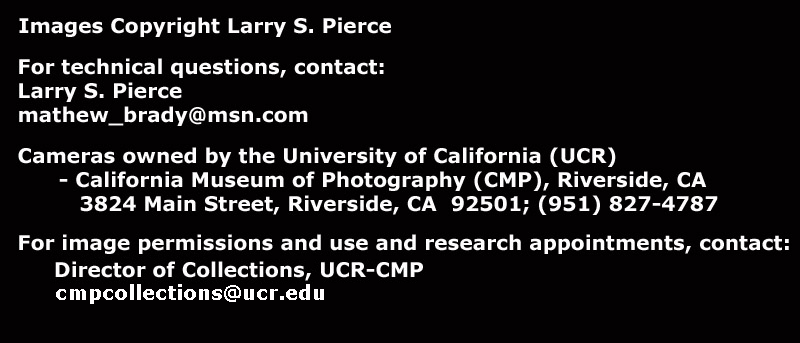American
Optical Co.
Scovill Mfg. Co., props.
Imperial Cabinet Camera, c. 1880
Walzl's Photographic
Journal and The Photographer's Friend, Richard Walzl, 7th ed. 1882,
p.47
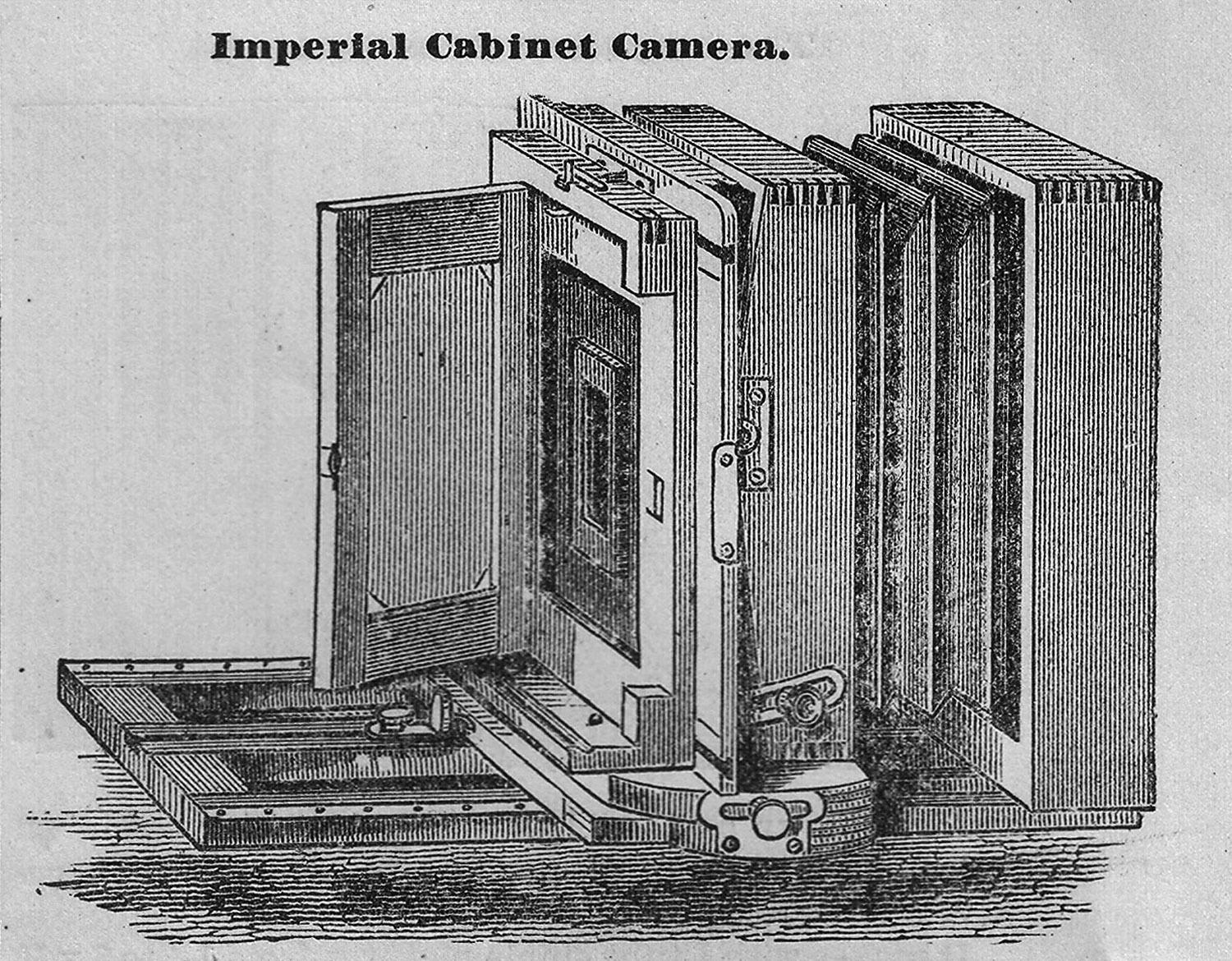
10 x 10 - Single
Lens Setup
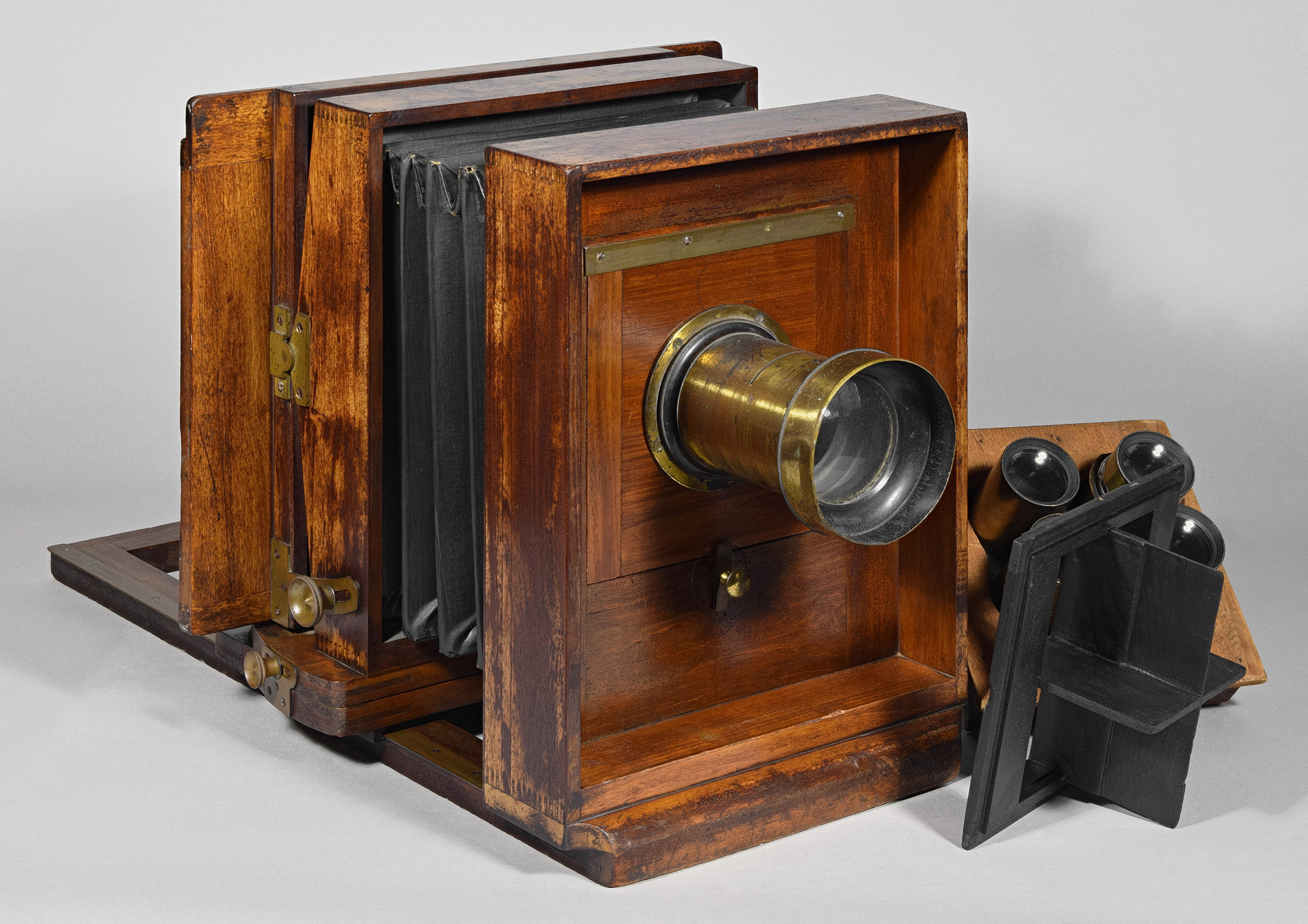
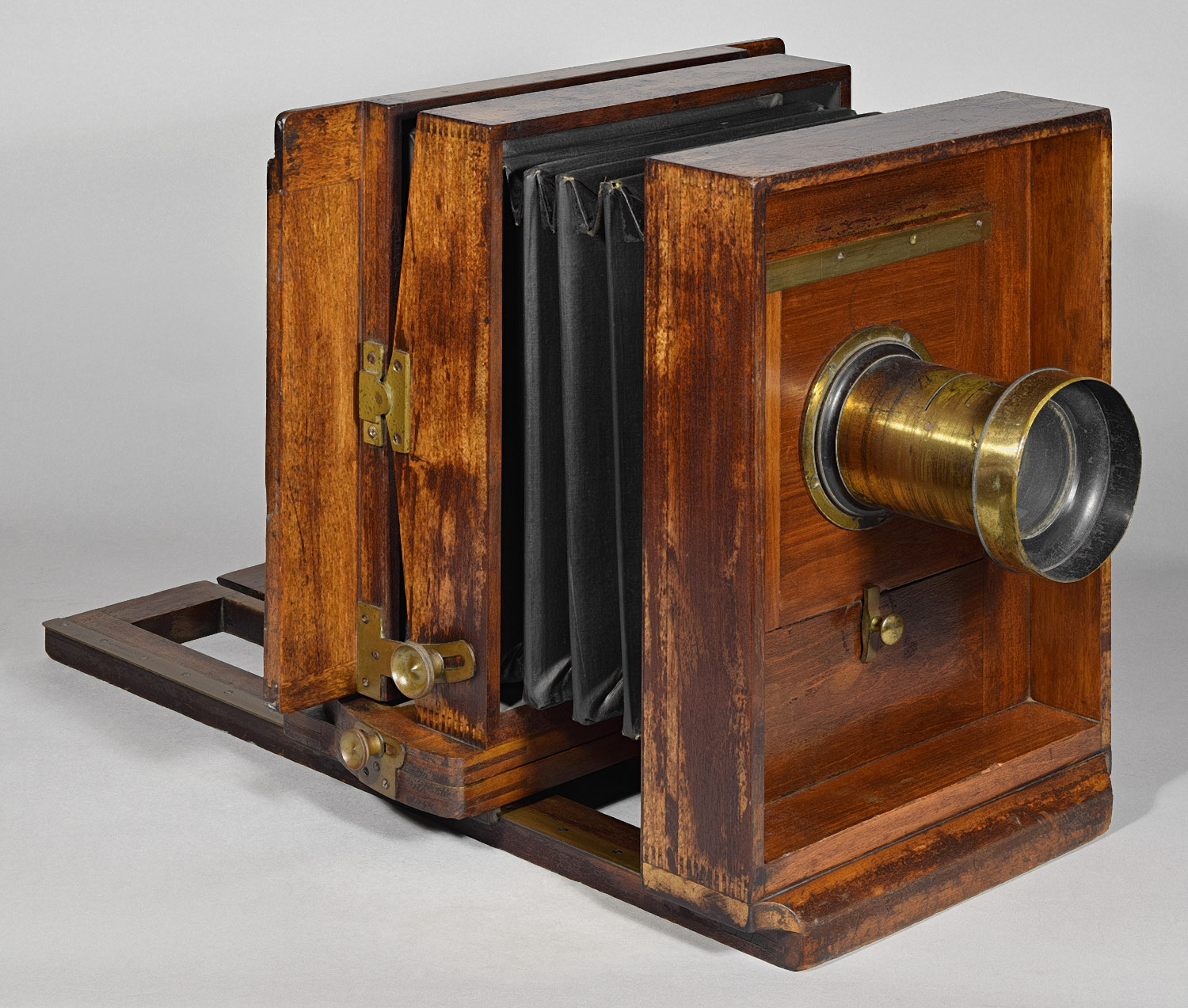
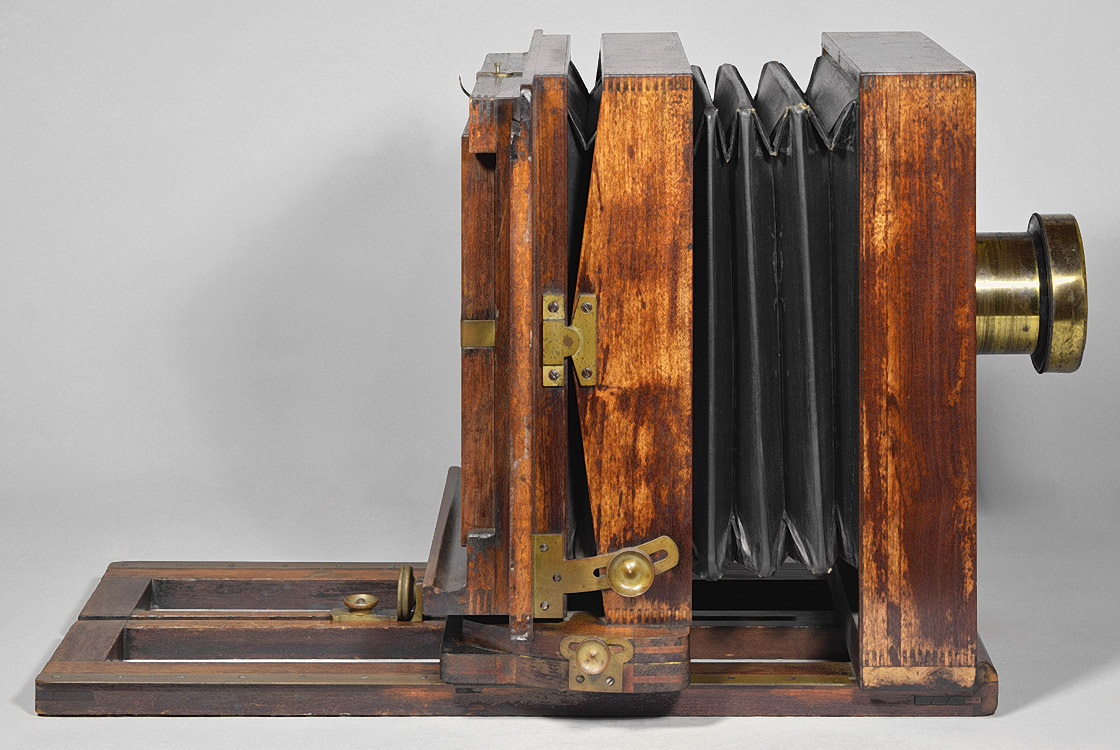
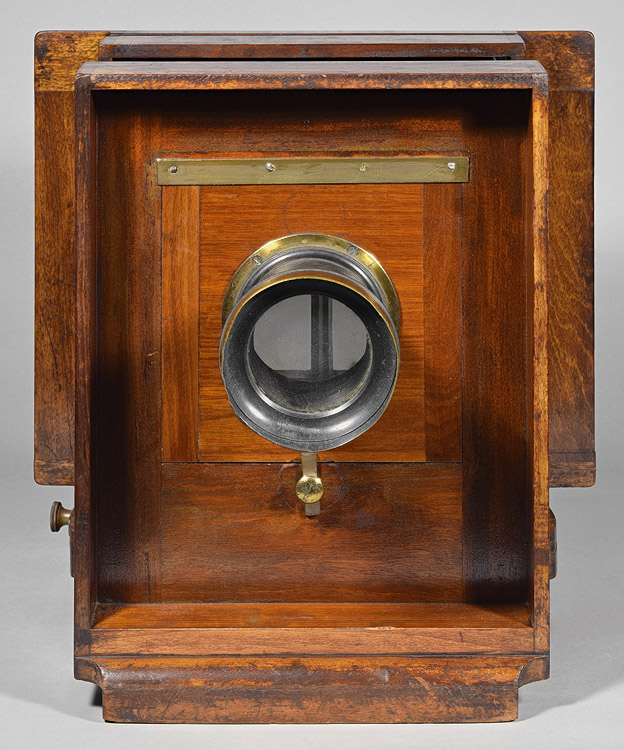
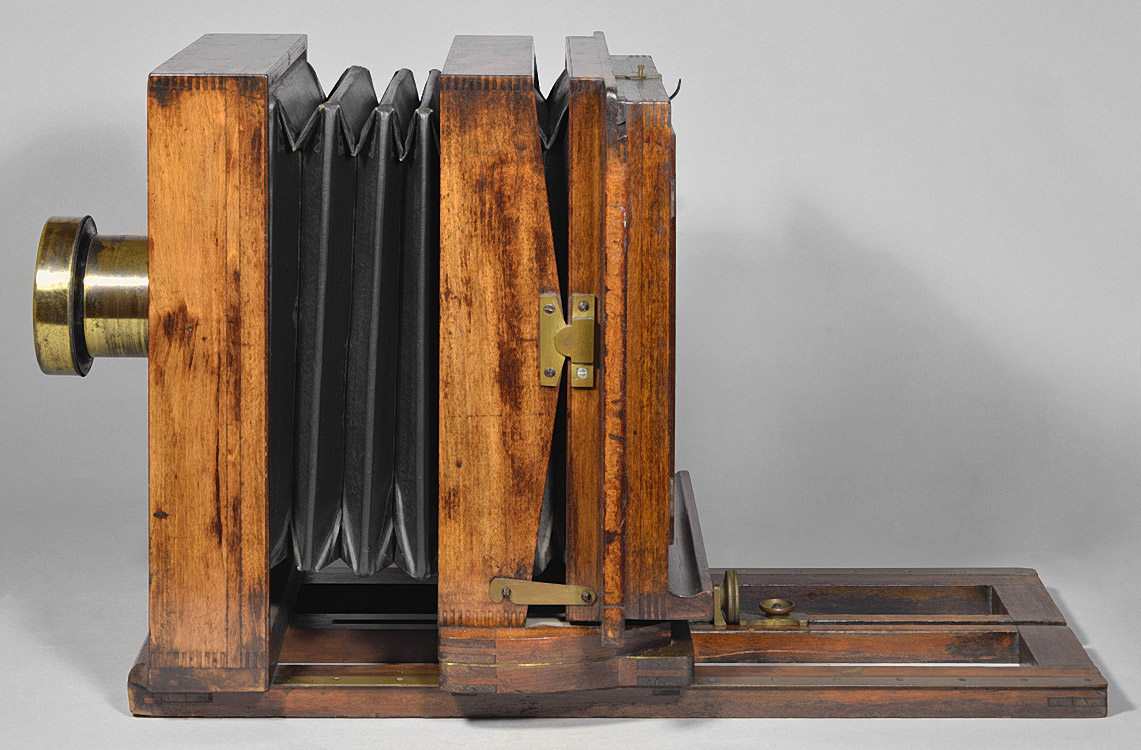
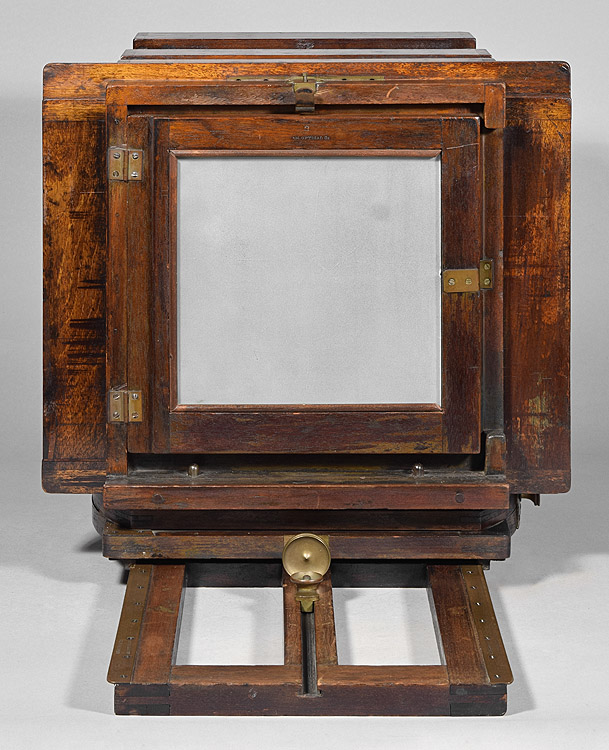
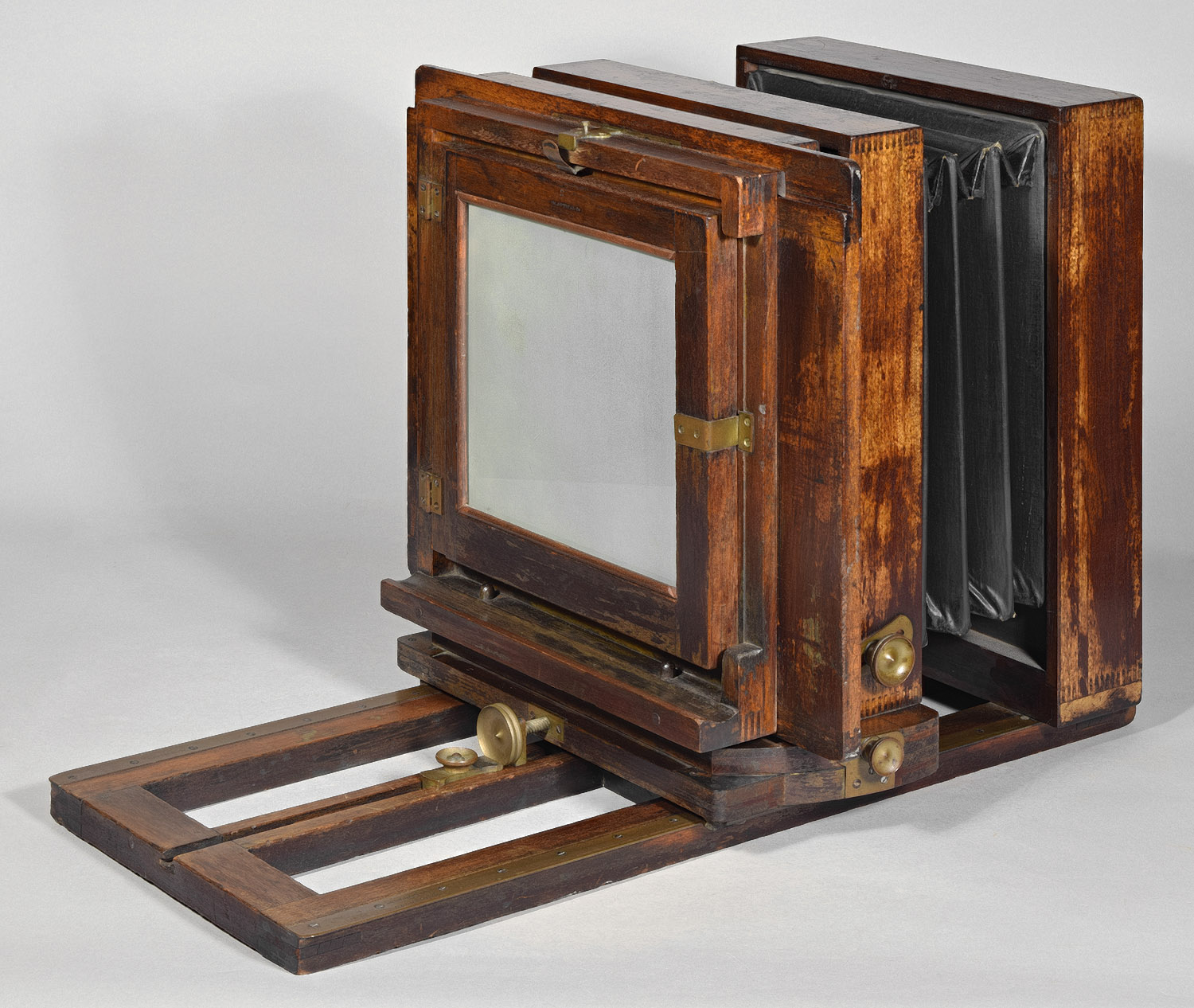
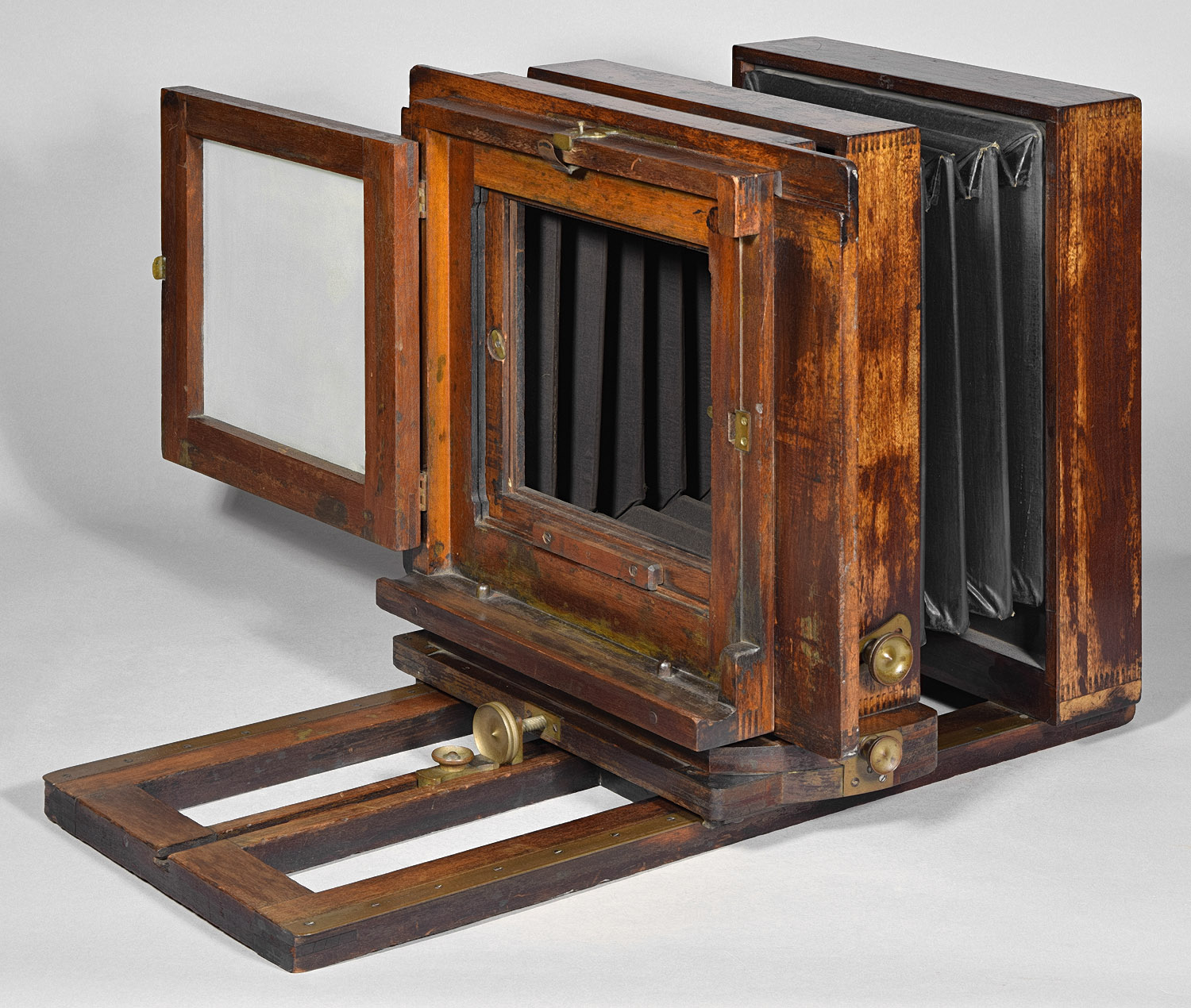
Bottom
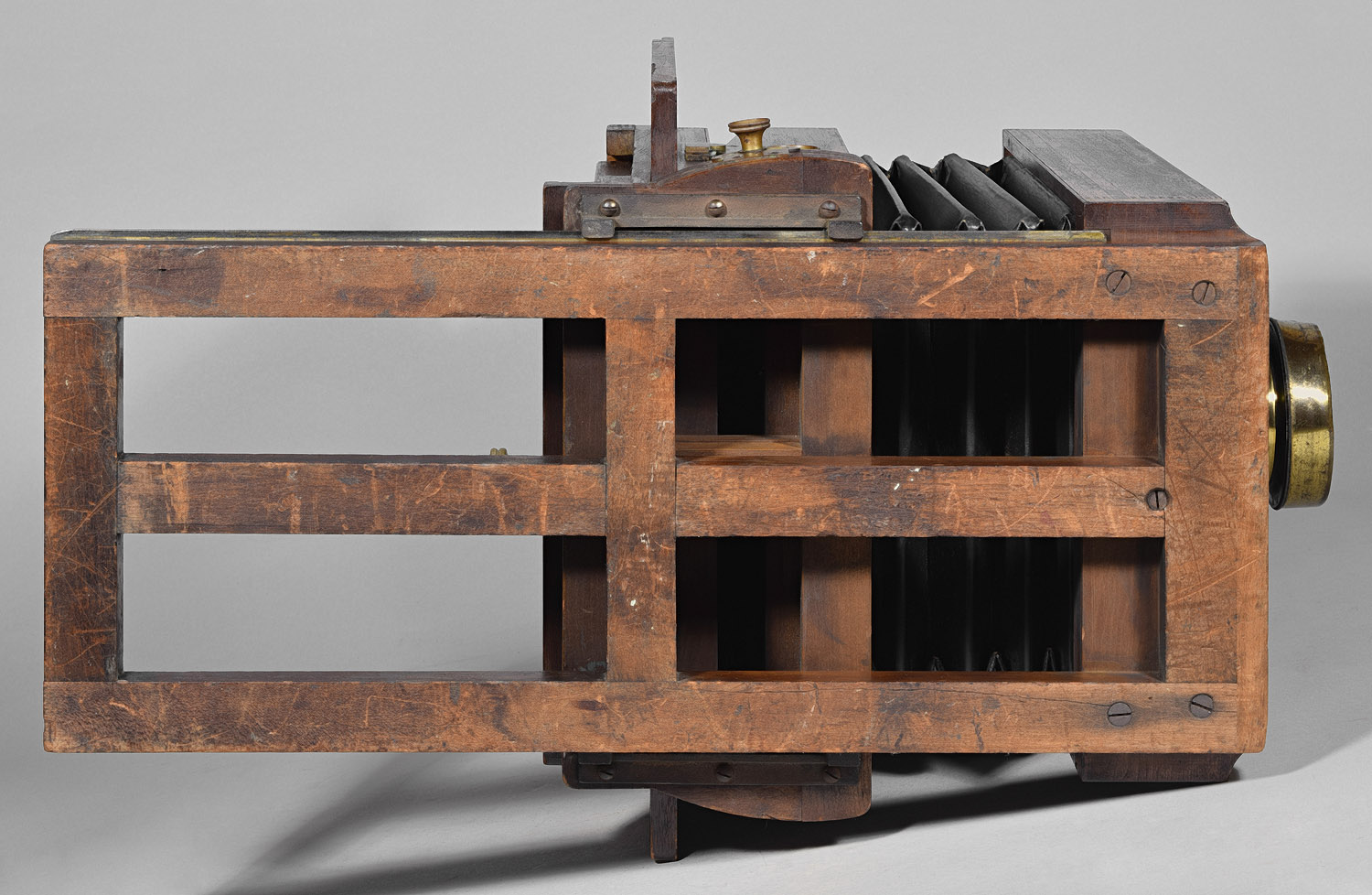
Top
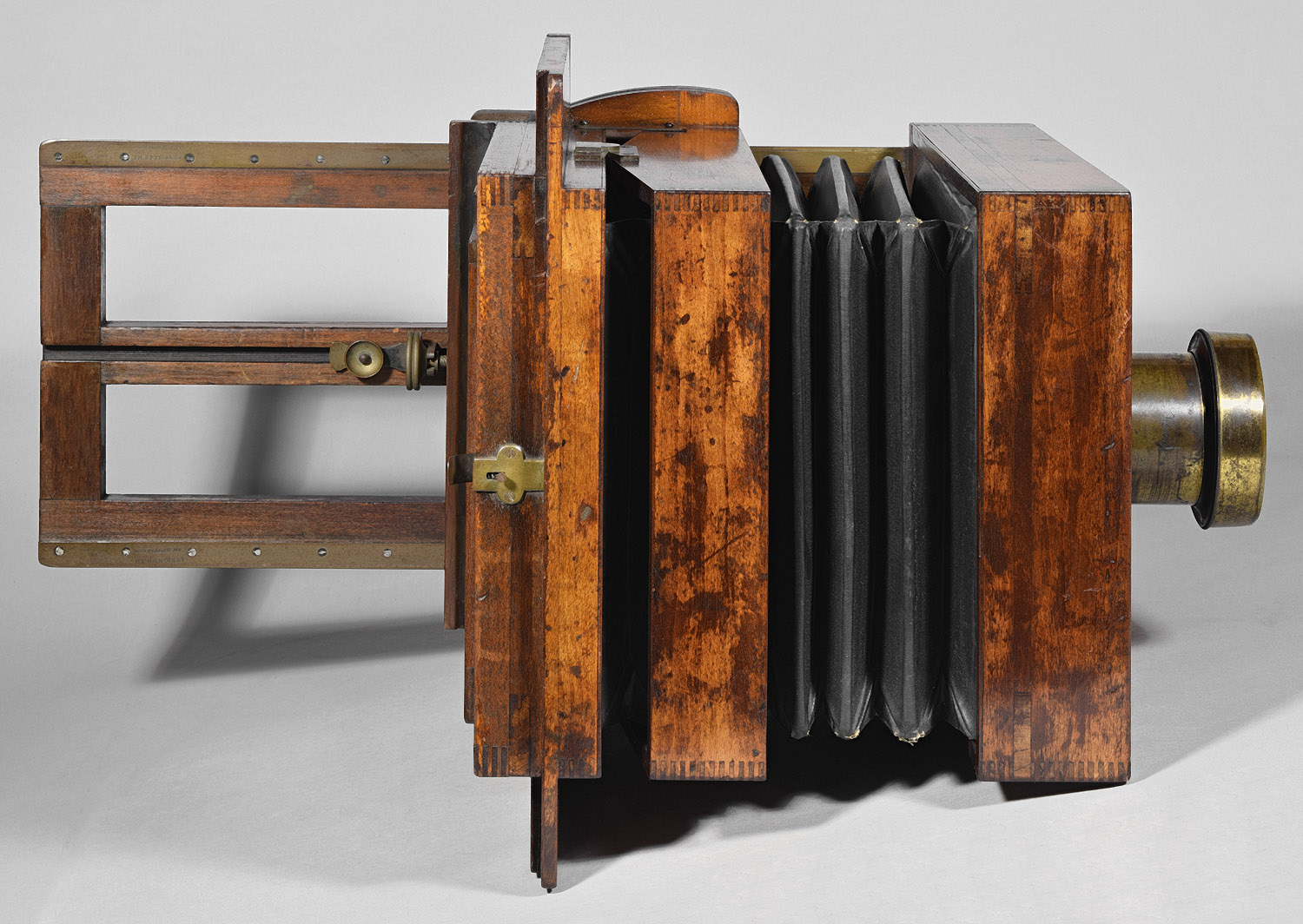
Stamps, top of ground glass frame: an assembly no.
"2" and the manufacturer "Am. Optical Co."
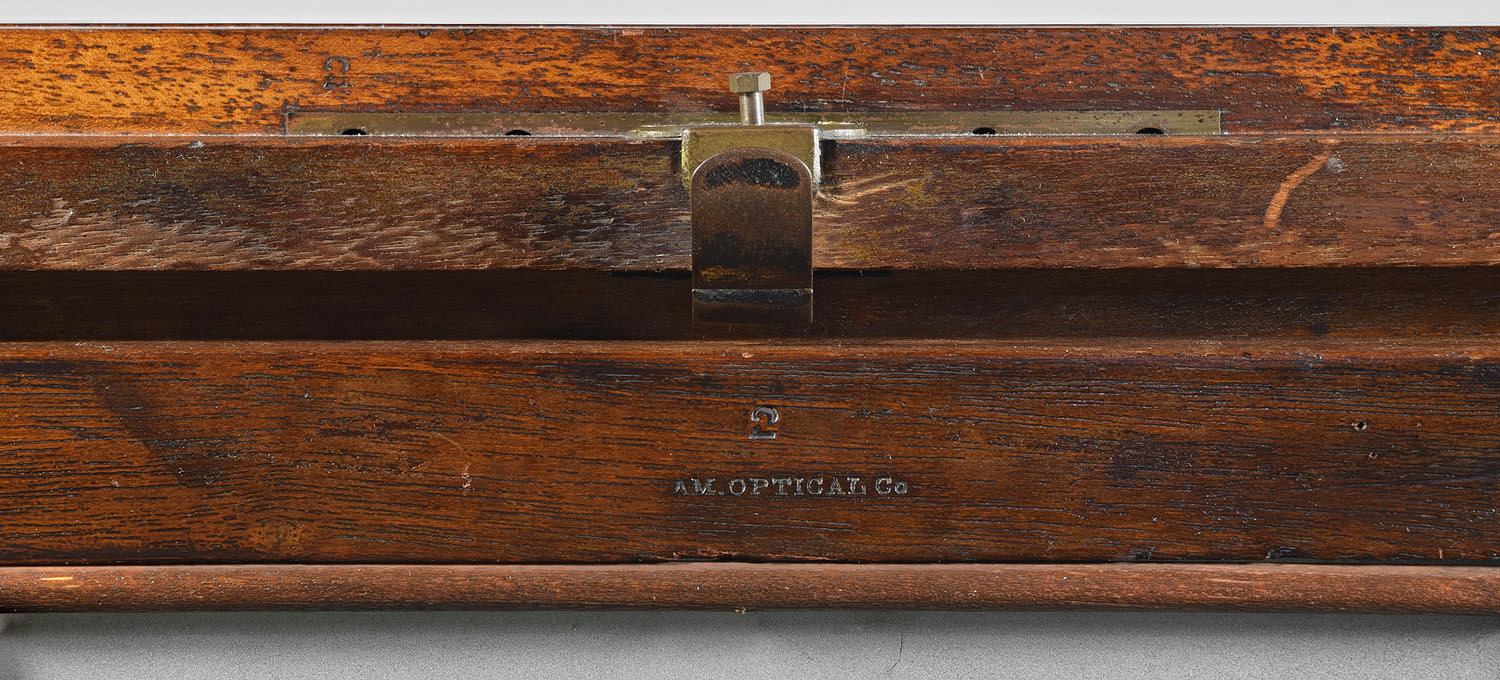
Bottom of rear standard, showing stout pegs over
which the plate holder sits.
In front of the pegs is a trough stained black due to wet plate
drippings.
Below the trough is the brass fine focus knobs - the larger one for
focusing and the smaller one to lock the sliding bar.
On both sides of the platform are brass guides on which the rear
standard glides, preventing wear to the wood. These were common in
field view cameras of the wet plate era, but relatively rare on studio
cameras. As in many American Optical products, the slots of the
screws in the guides are aligned in one direction. This can only
be achieved by laboriously trying screw after screw at random until one
lines up as desired.
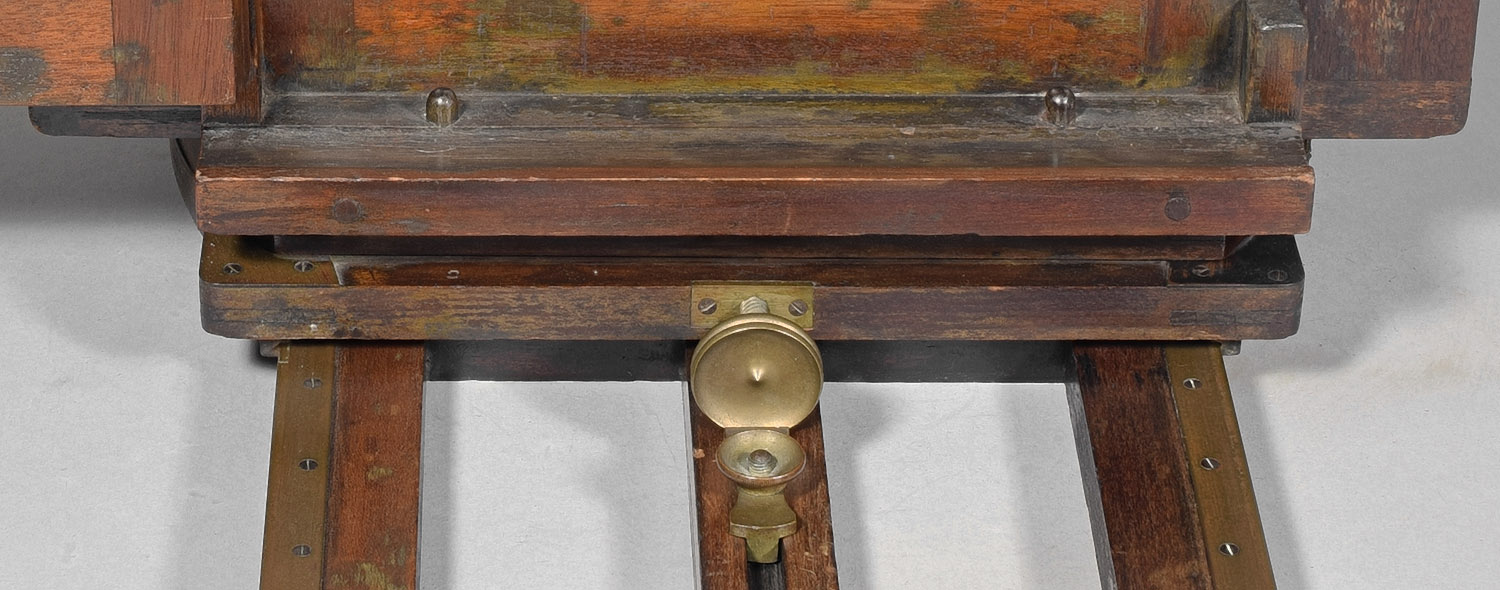
Same camera having four lenses installed, which
allows four quarter-plate images to be projected on a plate at one time.
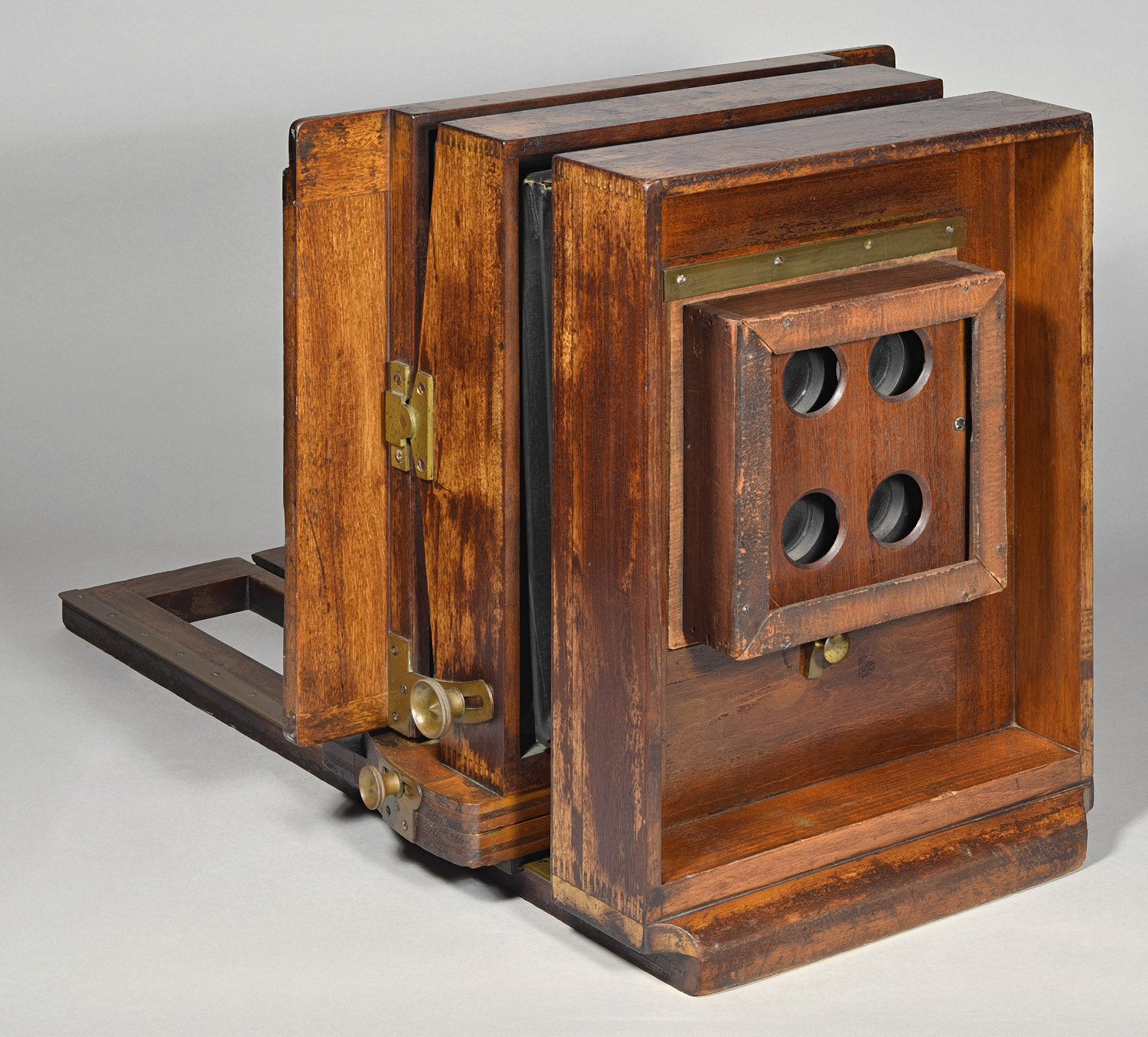
Rear of camera set up for four images. The
black insert separates the images so the rays from one image do not
interfere with the others.
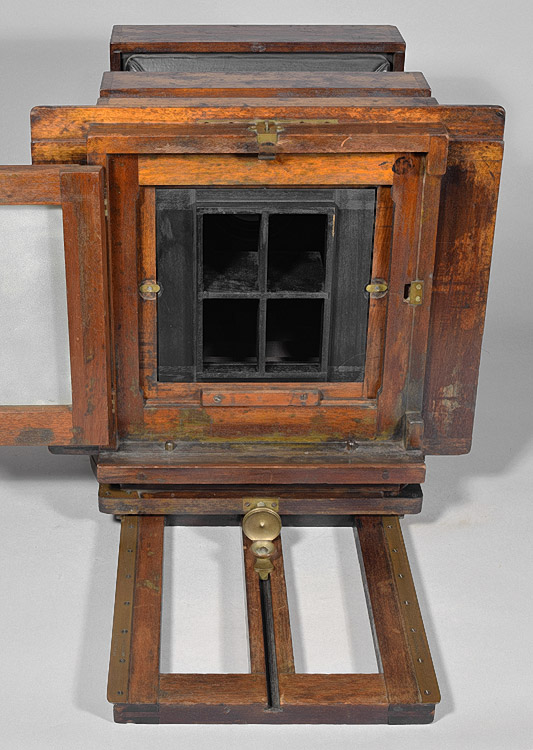
Camera stand associated
with the above camera - Overall (L) and Detail of Crank (R)
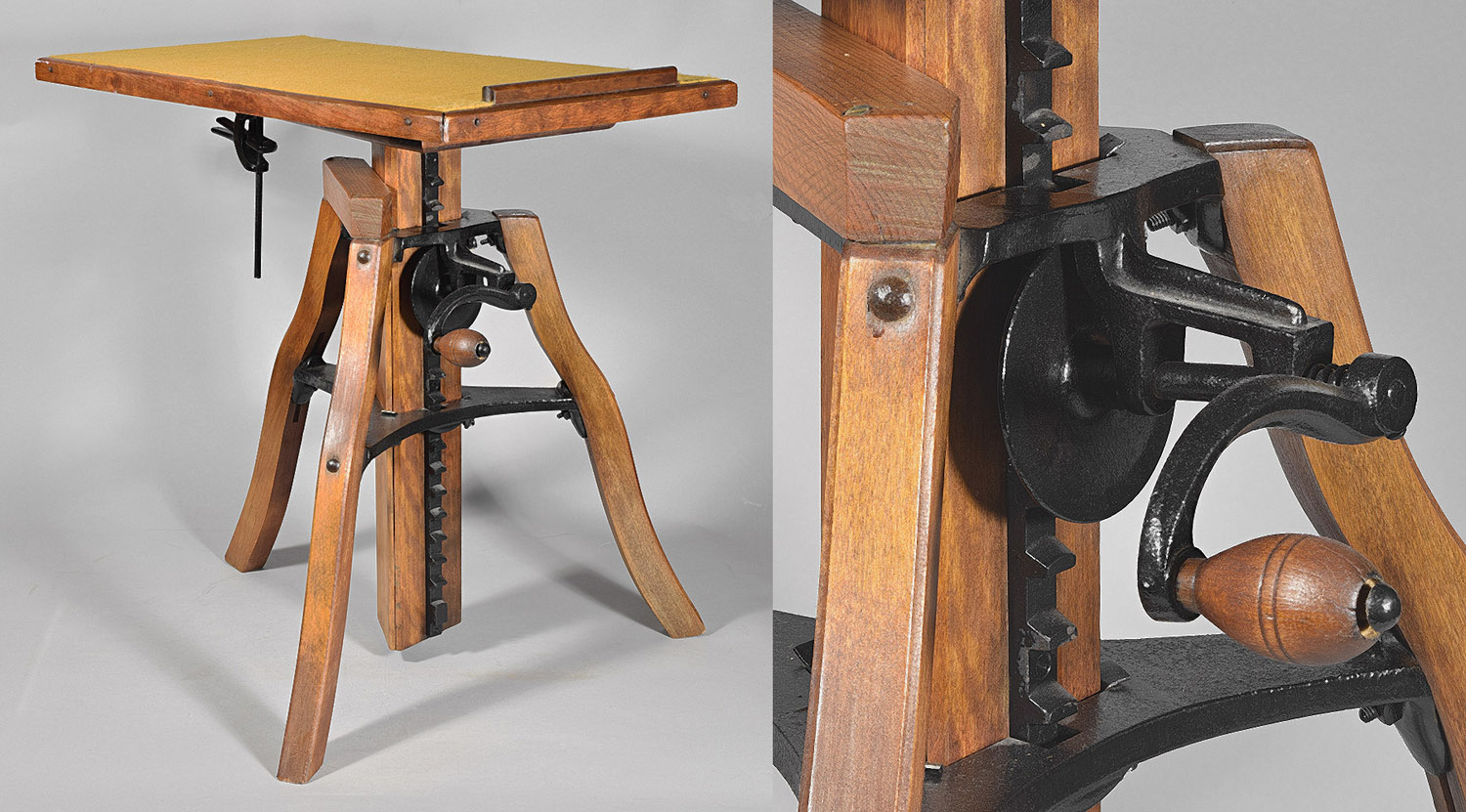
Rear Tilting Mechanism
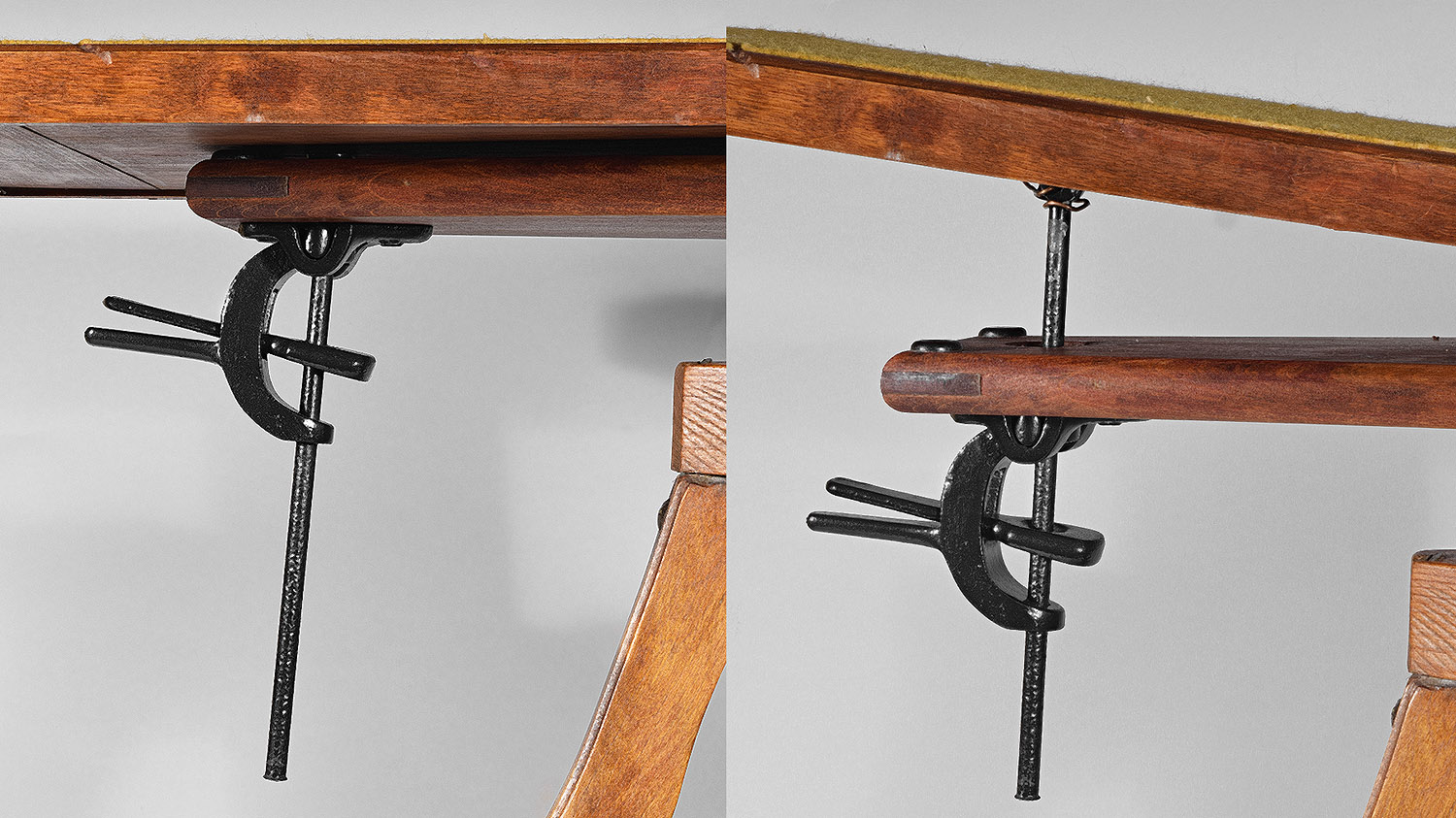
Notes:
The American Optical Imperial Cabinet Studio Camera is different than most studio cameras, having more in common with field cameras of the time than to other studio cameras: It is heavily made, and its platform does not fold (as other studio cameras), but:
1) Almost all studio cameras of the 1870's and 1880's have wooden beds on which raised wooden rails keep the rear standard tracking straight (for example, the J.A. Anderson Success-Like Portrait Camera on this web site). The AO Imperial Cabinet Studio Camera, however, .has brass guides on the edges of its platform, which keep the rear standard straight, and which also prevent wear. This same system can be seen on the American Optical Philadelphia Stereo Field Camera (c.1870's), and the Samuel Peck Stereo Field Camera (c.1870's), both of which are ultimately Scovill Mfg. Co. products, since the American Optical Co. and Samuel Peck & Co. were owned by Scovill at the time. The brass guides of these three Scovill product cameras, The AO Imperial Cabinet Studio Camera, the AO Philadelphia Stereo Field Camera, and the Samuel Peck & Co. Stereo Field Camera, are show below as details No. 1.
2. Often, the weight of a studio camera determines that a lever-assisted fine-focus control be used. But the AO Imperial Cabinet Studio Camera uses the same type of fine focus wheel and clamp used on their field cameras, as marked by the No. 2 below.
3) Most of studio cameras control their swings via rack and pinion-style controls (for example, as on the J.A. Anderson's Extra Quality Portrait Camera on this web site). Even some field cameras feature these easy to use but heavy controls (e.g., the AO New Haven Compact View Camera, J.A. Anderson's Probably Anderson's Compact Folding View and the E. & H.T. Anthony & Co. Climax View Camera). But the AO Imperial Cabinet Studio Camera uses the same type of simple, curved slot and thumbscrew first used by John Stock & Co., and also used by Scovill Mfg. in its 1870's American Optical and Peck view cameras, illustrated by No. 3, below.
The wood of the above camera has light and dark areas - the light areas are those still having the original shellac finish - the dark areas have no finish left and have oxidized with time.
Illustration of similar details on the
AO Imperial Cabinet Studio Camera,
the AO Philadelphia Stereo View Camera,
and the Peck & Co. Stereo View Camera:
1) brass guides, 2) fine focus screws, and 3) slot and thumbscrew swing
controls.
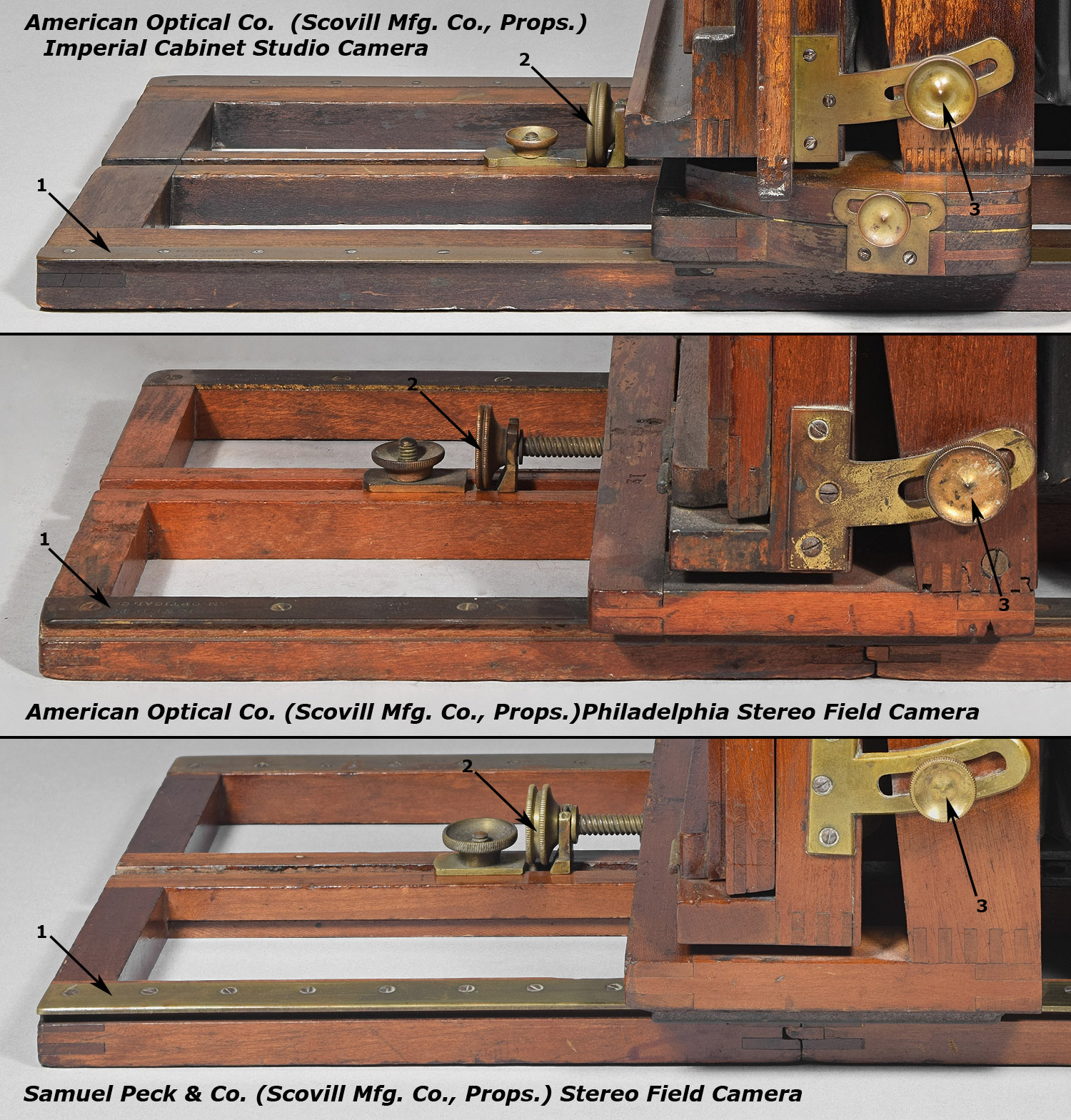
References:
The Photographer's Friend, Priced Catalogue of Photographic
Requisites of Superior Excellence, The National Photographic
Emporium, Baltimore, MD, Richard Walzl, Prop., 2nd Edition, 1872, pp
88-89
Walzl's Photographic
Journal and The Photographer's Friend, Richard Walzl, Baltibmore,
MD, 7th ed. 1882,
p.47
